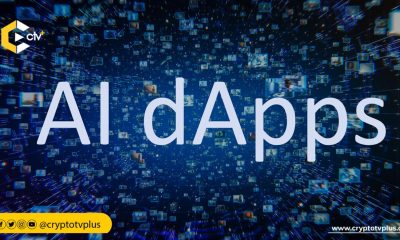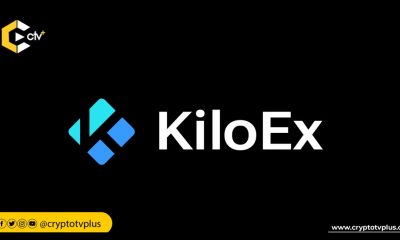Education
What Web3 needs to focus on!

Web3 is the next generation of the internet, which aims to create a more decentralized, open, and secure internet for users. Web3 infrastructure refers to the underlying technologies, protocols, and platforms that enable the development and deployment of decentralized applications (dApps) and services on the web. This infrastructure includes blockchain networks, decentralized storage systems, peer-to-peer networks, and other technologies that enable the creation of a decentralized web.
The existing Web3 infrastructure is still in its early stages of development, and there are many challenges and opportunities that need to be addressed in order to realize its full potential. In this article, we will discuss some of the key areas that we need to focus on going forward. Specifically, we will focus on the following topics:
- Scalability,
- Web3 infrastructure required on an application level,
- Improving application user interface (UI) and user experience (UX), Improving on-chain data usability,
- Reducing web2 dependency by decentralizing storage,
- Preparing for the multichain world,
- Security,
- Improving Remote Procedure Call (RPC) providers, and
- Building a strong ecosystem of developers, users, and other stakeholders.
Scalability
Going forward, there are several key areas that we need to focus on in order to advance the development of Web3 infrastructure. One of the most important is scalability, which refers to the ability of the infrastructure to handle a large number of users and transactions. Currently, many blockchain networks and decentralized systems are limited in terms of their scalability, which can hinder the adoption and use of these technologies. Improving scalability will be essential for the widespread adoption of Web3 infrastructure.
Web3 infrastructure on an application level
Another key area that we need to focus on is the Web3 infrastructure required on an application level. This refers to the technologies and platforms that are needed to enable the development and deployment of decentralized applications and services on the web. Some examples of this infrastructure include blockchain networks, decentralized storage systems, and P2P networks.
Peer-to-peer (P2P) networks
Peer-to-peer (P2P) networks are also an important part of Web3 infrastructure. P2P networks allow users to directly connect with each other and exchange data and other resources without the need for a central server or intermediary. By focusing very much on web3 infrastructure on an application level, we can help to improve the scalability and performance of dApps, as well as make them more resistant to censorship and outages. We can also use them to enable a wide range of decentralized applications and services, such as file sharing, messaging, and more.
Improving UI/UX
Improving application UI/UX is another important area to focus on. While decentralized applications and services have the potential to provide a wide range of benefits to users, they can also be complex and difficult to use for many people. Improving the UI/UX of these applications can help to make them more user-friendly and accessible, which can in turn help to increase their adoption and use.
Improving on-chain data usability
Next, Web3 needs to focus on improving on-chain data usability. On-chain data refers to data that is stored on a blockchain network, and it is an important part of many decentralized applications and services. However, accessing and using on-chain data can be challenging for many users, and improving the usability of this data will be important for the widespread adoption of Web3 technologies.
More reliance on web3 decentralizing storage
Web3 also needs to focus on reducing web2 dependency by decentralizing storage. Currently, many decentralized applications and services rely on web2 infrastructures, such as centralized cloud providers, for storage and computing. On the other hand, using decentralized storage systems can provide a number of benefits, including increased security and privacy, as well as increased availability and resiliency. Some examples of decentralized storage systems include InterPlanetary File System (IPFS), Arweave and Filecoin. By decentralizing these services we can create a more decentralized and resilient web3 infrastructure.
Multichain, Interoperability & improving RPC providers
Preparing for the multichain world is another important area of focus. Currently, there are many different blockchain networks and protocols available, each with its own unique features and capabilities. In order to fully realize the potential of Web3 technologies, it will be important to develop infrastructure and tools that can support multiple blockchain networks and protocols.
Improving RPC providers is another key area of focus. RPC providers are responsible for enabling communication between different blockchain networks and protocols, and improving the performance and reliability of these providers will be important for the development and adoption of Web3 technologies.
Security and strong developer ecosystem
In addition, Web3 needs to focus on security. Decentralized networks and platforms are inherently more secure than their centralized counterparts, but they are still vulnerable to attacks and other security threats. Web3 needs to invest in robust security measures to protect against these threats and ensure the integrity of the decentralized web.
Finally, Web3 also needs to focus on building a strong ecosystem of developers, users, and other stakeholders. This includes building a supportive community of developers who can contribute to the development of the decentralized web, as well as building partnerships with companies and organizations that can help to drive adoption and support the growth of the decentralized web.
Closing thoughts
Web3 has the potential to transform the way we interact online. It offers the promise of a more open, transparent, and secure internet, where users have greater control over their data and how it is used, but it still has a long way to go in order to realize its full potential. By focusing on the key areas we mentioned above, Web3 can continue to grow and mature, bringing the benefits of the decentralized web to more people around the world.

























5 Comments